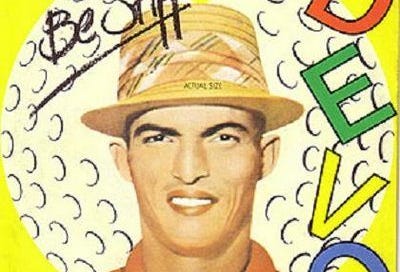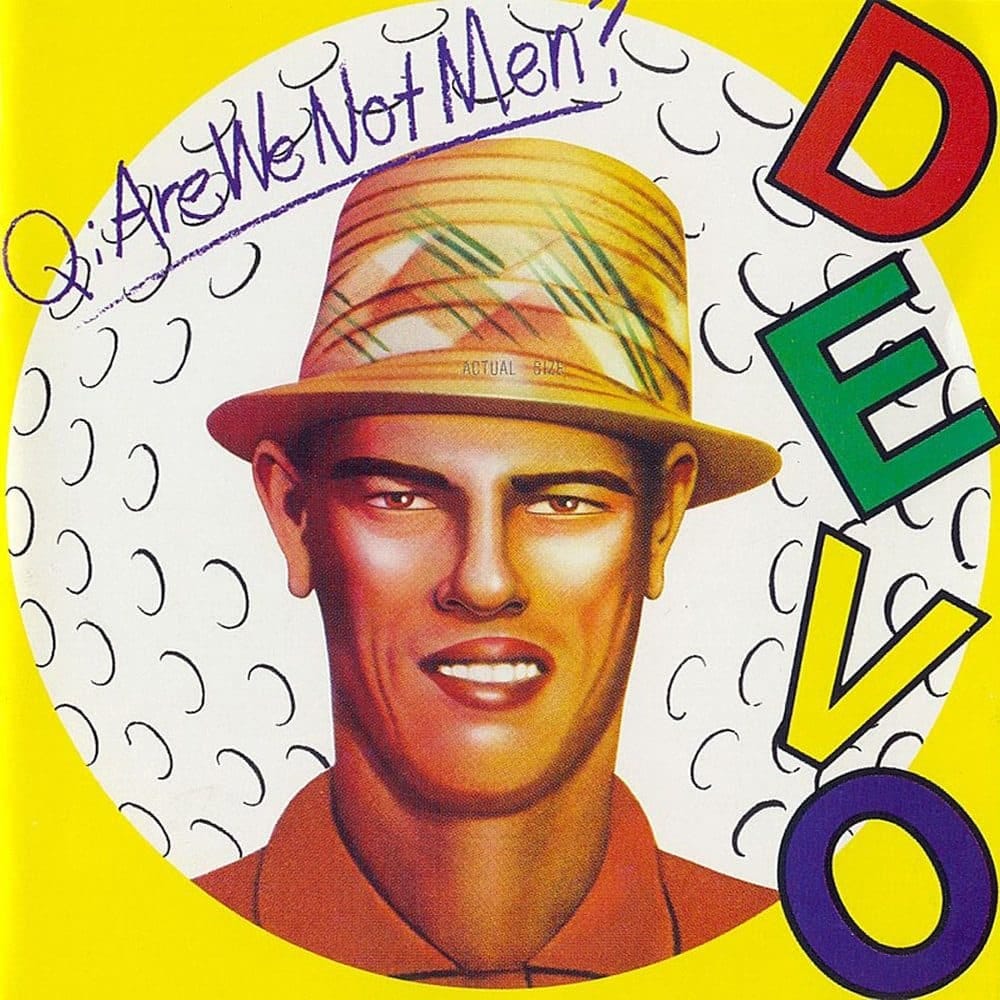When I was growing up, my parents would watch golf tournaments on television. My dad, who was from the U.K., liked to play on occasion, and he had taught my mother to play as well. They both owned a set of clubs that didn't see a lot of action during my lifetime, but my dad would take me out, when I was big enough, to smack a bucket of balls around the driving range, which I enjoyed until I developed a nasty blister on my hand.
Of course, being a creative and somewhat introverted kid, I tended to fixate on the weird stuff about golf. Like, how do they get the grass on the greens so short? What's in the hole? What about that mail truck that drives out on the driving range and picks up balls to be cleaned and deposited into buckets to sell to people who came to practice?
When my folks would turn on golf on a Saturday or Sunday afternoon, it was background noise for weekend activities: my dad cutting the lawn or repairing something while mom worked on dinner or laundry or helping me with homework questions. My dad would come in sweat soaked from his toil on the lawn, grab a beer and sit down to watch a couple of holes, then off he'd go.
To me, it was horribly dull. I got why people might enjoy playing golf, but why they'd want to watch it was beyond me.
Then I saw Chi Chi Rodriguez.
He stood out in a crowd of white men in plaid pants and polo shirts. First, he was Puerto Rican. There were no Black and few Hispanic golfers on the PGA tour at the time he joined in 1960 (Charlie Sifford was the first Black PGA member in 1961) , and even at the time I would have seen him, in the mid-seventies, it was just a given that golfers were not men of color. In addition, Mr. Rodriguez had a bit of what you might call panache.
When he first started playing, he would put his hat over the hole after sinking a birdie or eagle. Word got back to him that the other golfers were not too jazzed with that maneuver, so he set out to come up with another signature. With his ‘toreador dance’ he used his golf club to portray a matador delivering a coup de gras to the bull, represented by his ball. Then he would pull the putter back and elaborately mime putting it back into an imaginary sheath. Very cool.
Those teen years of weekend televised golf as the backdrop to family life became a memory as I left for college and then moved on out into the world. Through t he years I would occasionally see Chi Chi on television on a sports report or an old newsreel. Somehow it was a reassuring source of happiness just to know he was out there.
Juan Antonio Rodriguez, 88, passed away yesterday, August 9, in Clearwater Florida. And I was today years old before I discovered the story about how Chi Chi ended up, in altered form, on the cover of Devo's debut album Q:Are We Not Men? A: We Are Devo. No joke.
Back in '76 or so, it seems that Devo leaders Mark Mothersbaugh and Jerry Casale were stomping through a K Mart or something, in search of materials for an art project, when what should they run across but, as described by Jerry: "these six practice golf balls in a clear, plastic pouch sealed shut at the top with a cardboard display head." And on the display head is a photograph of Chi Chi Rodriguez with a giant golf ball behind him, looming up like some maniac moon.
"We chuckle. We have to have that," Jerry says. "And, of course, golf was almost symbolically like the most lame, kind of, you know, bourgeois pursuit that you could have, especially at that time. Unless your parents were rich, you didn’t get to go golfing...But the one guy who stood out was Chi Chi, because he didn’t fit with the rest of the golfers at all. He wore these loud pants and bright shirts, and he had this famous hat that only he wore."
https://www.wbur.org/onlyagame/2017/08/25/golf-music-casale-mothersbaugh
Later, Devo used a copy of the image of Rodriguez from the golf ball package on the sleeve of their first single, "Be Stiff." A commentary on commercialism and American conformity, the single was mostly distributed in the UK by Stiff Records. Soon after the band was signed by Warner Brothers Records, and proceeded to record their debut record.
When it came time to put together cover art for the album, Mark and Jerry decided to just go with the same Chi Chi Rodriguez artwork from the single, until they were stopped dead in their tracks by Warner’s David Berman, and the inevitable legal department. The band was told that they absolutely could not use Rodriguez' likeness on their album without his express written permission. The band wrote to Rodriguez, asking permission to use his likeness, but it soon became apparent that time would run out before they could receive his blessing. Instead, the label's marketing department made alterations to Rodriguez' likeness per the band's suggestions. The image's mouth, nose, facial shape, and eyes were all adjusted to make the image look less specifically like the famous Puerto Rican golfer.
The band did get permission to use the original image of the golfer, but it was too late. The records were pressed, the covers getting printed as the label sought to get the album out and in the stores prior to the group's scheduled appearance on Saturday Night Live. Q:Are We Not Men? was released with the weird, kind of Church of the SubGenius-vibe image.
"All our efforts were, in fact, in earnest," Jerry says. "But what it looked like in the end is that Devo had meanly tricked Chi Chi Rodriguez and put out something that made him look hideous. It was — you know, it was a mess."
Rodriguez had requested 50 copies of the album to give to family and friends at Christmastime and the label sent them, along with a check for $2500. Rodriguez did give out the copies of the record even though he found, on listening, that it was not to his taste. "I didn’t like it," he told an interviewer. "I like Frank Sinatra and Nat King Cole and Dean Martin, who was my favorite, you know. 'Cause music is not supposed to rile you up. Music is something to bring you down."
So there you have it. Maybe you've heard about this before, maybe not. It made me stop to think about how Rodriguez was one of golf's top ambassadors, bringing joy and entertainment even to people who, like me, really couldn't give a fig about the game of golf. I thought also about my lifelong obsession with the outliers, the ones who don't quite fit into the time or place in which they find themselves. I don't think that Chi Chi Rodriguez thought of himself as an outsider or a rebel, but just as a decent guy, a mensch, a Bodhisattva. This is what he had to say, when all was said and done, about his appearance on the Devo album cover:
"I thought it was these young people trying to make a career out of it, and I could help them and that’s it. Because I like to do something good every day of my life, and I wanna leave the earth better than I found it."
We wish you Godspeed, Chi Chi Rodriguez.
New Directions in Music is written by a single real person. It is not generated by AI. Please help spread good content by reading (Thank you!) and sharing this post with a music loving friend. If you like what you see, please sign up for a free subscription so you don’t miss a thing, or sign up for a paid subscription if you can.





I just remembered Les Nessman mispronouncing Rodriguez' name on "WKRP" ("Chai-chai- Rod- re-gueese".) That's mostly how I know the man existed now.
"Be Stiff" was their fifth single.